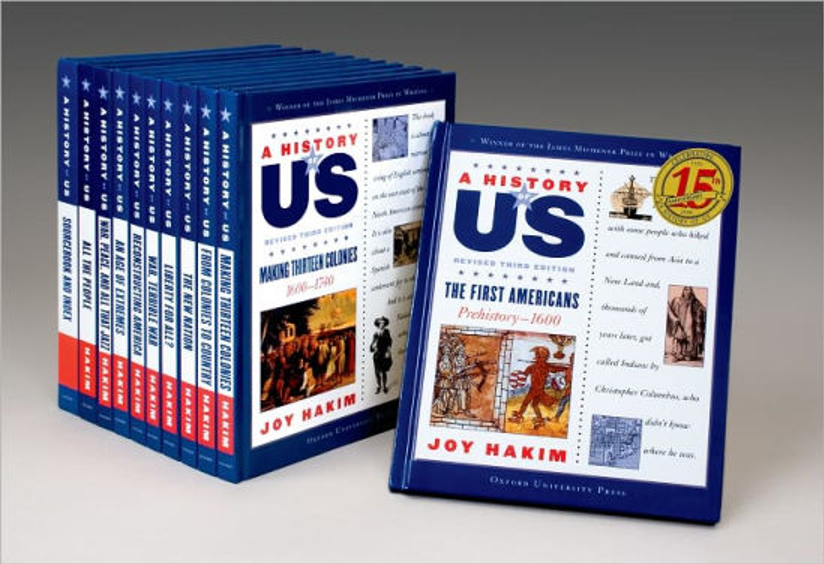
If you or your school district has the autonomy, don’t adopt any of the 800-1,300 page textbooks. Instead, consider one of these. Then supplement with solid web sources, setting students forth to “do” history themselves, critical books like Lies My Teacher Told Me, etc. Students will grow much more involved than if they just slog through the textbook.
Use instead of fat textbooks, if you can:
- Joy Hakim’s ten paperbacks, A History of US (NY: any of three editions, published by Oxford University Press, also distributed by D. C. Heath), commit some of the usual textbook faux pas but are told in a more exciting and less god-like voice, hence lend themselves to complementing and critiquing. Often older editions can be found on deep sale.
- The Nystrom Atlas of United States History (I have not read this book closely. Be sure you do before you choose it!)
- David C. King, Smithsonian American History: A Visual Encyclopedia. (I have not read this book closely. Be sure you do before you choose it!)
- Alan Axelrod. America: History Examined (NY: Penguin Random House) (I have not read this book closely. Be sure you do before you choose it!)
- Other quasi-textbooks are available from the Social Studies School Service. Be sure to read them carefully and critically before inflicting them upon students or, better yet, teach your students or children to read carefully and critically for themselves.
Use these in addition to the adopted fat textbook, if you must:
- Compare two different textbooks. Collect them. (Often they can be had for <$1 because no one wants them.) Seeing how they differ helps readers realize that history is not just memorizing “the truth.” Two editions of the same textbook can also play this role.
- Compare a different book to a standard textbook. Possibilities include Howard Zinn’s People’s History of the United States, a left-wing approach, or Clarence B. Carson, A Basic History of the United States (Wadley, Alabama: American Textbook Committee, 1986), from the right.
- Or use histories emphasizing a particular group or theme, such as Before the Mayflower by Lerone Bennett (Penguin) or Ruth Warren, A Pictorial History of Women in America (Crown, 1975), which relate to many issues in American history.
- All over this site, Loewen suggests teachers should teach 30-50 topics, not try to “cover” the textbook. This page, aimed at K-12 teachers, makes exactly the same point, with many helpful links.